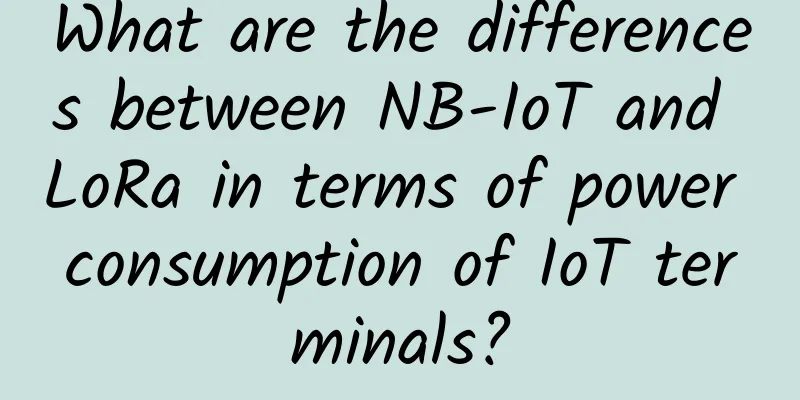The United States lost 5G simply because it made the wrong choice at the beginning

|
In 2019, Ren Zhengfei said that the United States did not lose 5G, but they bet on the wrong horse. Why did Ren Zhengfei say that? It has to do with the two bands of 5G, which have two bands, one is centimeter wave and the other is millimeter wave. In fact, it is just Ren Zhengfei's euphemism. Losing is losing.
In terms of the choice of waveband, the United States chose millimeter waves, while Huawei chose centimeter waves. The signal propagation of our mobile phones requires a medium, and this medium carrier is electromagnetic waves. As the name suggests, millimeter waves are electromagnetic waves with a wavelength of 1-10 mm and a frequency of 24-100 Hz, while centimeter waves are electromagnetic waves with a wavelength of 1-10 cm and a frequency of 450-6 GHz. Although the difference is only between centimeter wave and millimeter wave, their technical characteristics are very different. The characteristics of millimeter wave are fast propagation rate and small delay, which perfectly meets the needs of 5G technology. So the United States chose millimeter wave at that time. They believed that only by choosing this most suitable one can they run faster. Unfortunately, they took a big step. Although millimeter waves meet everyone's needs, they are not without disadvantages. Their disadvantage is that they are greatly affected by the surrounding environment during transmission. They cannot even pass through a wall or a door, and the power loss is relatively large. In short, the signal is relatively poor, not easily affected by interference, and unstable. Google people conducted relevant tests in 2019. In the same environment, with the same height of base stations, millimeter waves can cover 12% of users, while centimeter waves can cover 57% of users. The coverage range of the two differs by about 5 times. The United States has not been able to solve these problems. If China needs to build 300,000 base stations in the same place, the United States will need to build 1.5 million base stations, which will cost more than 190 billion yuan. This is a huge expense. This is the kind of thing that costs more money and is not easy to do. However, with the large-scale application of 5G intelligence, people found that the current centimeter-wave 5G signal could not keep up with the application needs. At this time, the turning point came, and the research of 5G returned to millimeter waves. Now everyone is back on the same track and needs to study 5G millimeter waves again. Does that mean that if the United States had chosen millimeter wave from the beginning, it would have won this time? In fact, this is not the case. The United States' millimeter wave has remained at a stage without progress, which is like a castle in the air. Huawei has already laid a solid foundation in 5G and is also making steady progress in millimeter wave. It doesn't mean that whoever chooses first will be able to land first. I believe that even if the United States started researching millimeter waves earlier, with the vigorous development of Huawei, it will be able to catch up and will always lead the 5G trend and the direction of 5G in the world. Therefore, Huawei's success is not accidental. We should not take too big steps. We should be down-to-earth, take every step carefully, and move forward steadily to win the fruits of victory. Isn't there a saying that sometimes choice is better than hard work, and luck is also a kind of success? Some people say that the United States has already started researching 6G and has directly skipped 5G, so how can we catch up with them? In fact, this is to say that no matter how many G technologies are used, they need to be superimposed on the original basic technologies. 6G is just a faster and more advantageous version of 5G, which truly realizes the interconnection of all things. The United States has not even figured out 5G yet, so let me ask you, can we expect the United States to suddenly have an idea and turn it into 6G? |
<<: Omdia Viewpoint: CNF is key for telecom operators to realize the promise of 5G
>>: How to apply code intelligence technology to daily development?
Recommend
See how valuable 5G spectrum is
Following the 5G Summit in September and the rele...
How 5G contributes to Industry 4.0
During the COVID-19 pandemic, industries across t...
Keda joins hands with Ningxia Public Security Bureau to deepen the reform of "delegating power, deregulating and serving the people".
On November 27, the National Public Security Orga...
China Academy of Information and Communications Technology: Cumulative domestic shipments of 5G mobile phones reached 163 million units from January to December
Today, the China Academy of Information and Commu...
The origin and development of Ethernet, you will understand after reading this!
Basics 1. About Ethernet Ethernet was developed b...
Three tips for data center network maintenance
The network is the most important component of th...
Is 5G investment ahead of schedule? It depends on the innovation of market-oriented application scenarios
[[389300]] Not long ago, the market was hotly dis...
New challenges for operation and maintenance in 2018: Three experts tell you how to achieve intelligent operation and maintenance
[51CTO.com original article] With the trend of cl...
The 5G license has been issued, what should we do now?
The 5G license really came a bit suddenly. People...
Cloud-based assembly line, one-click construction is no longer a dream!
In December, the Software Development Cloud launc...
How to deliver security as code: 11 tips to get started
Security as code and security by design are hot b...
A Brief Analysis of Bluetooth MESH Broadcasting
Labs Guide Bluetooth mesh technology is implement...
OneTechCloud VPS for the school season is 20% off starting at 21 yuan/month, US CN2 GIA&9929/Hong Kong CN2&CMI large bandwidth/high defense optional
OneTechCloud (Yikeyun) brings you a discount code...
After working for more than 6 years, I still don’t understand the principles and techniques of coroutines
[[432311]] Preface Hello, my friends! Dabai has w...









